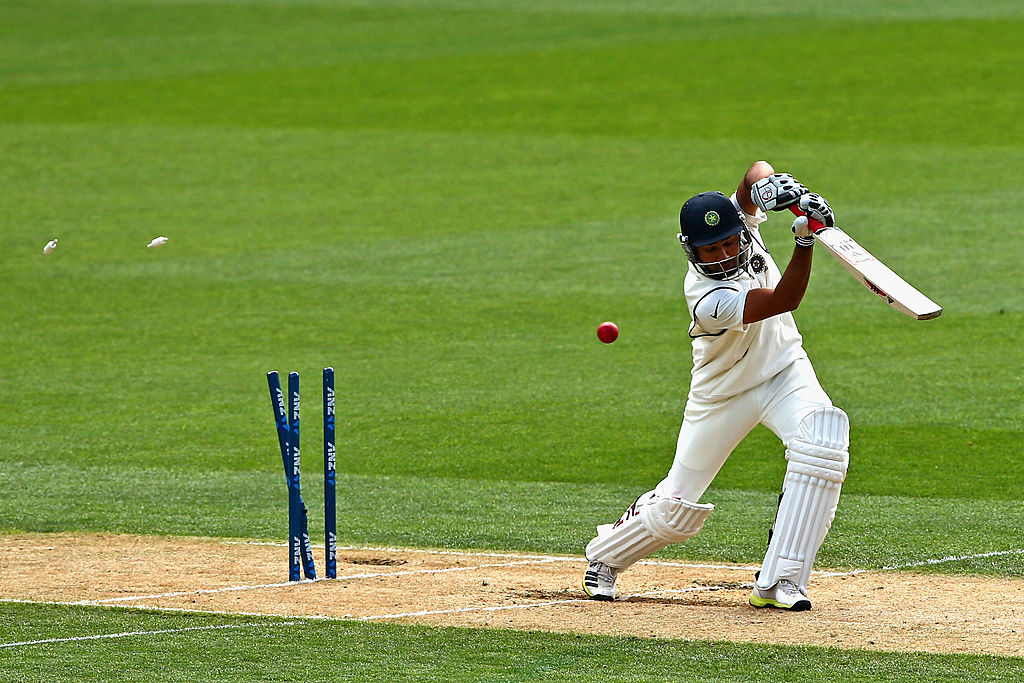Now or Never - a shot in the arm that can actually turn Rohit Sharma’s Test career around
The tag of “a batsman of ferocious talent” and the ability to take any bowler to the cleaners have given Rohit Sharma a box-appeal which is not common to many. He has been the ultimate player in the modern-day cricket while picking a dream team, but in Test cricket, he continues to flounder.

On song, it is a sheer joy to watch Rohit Sharma bat. If there is one player in the contemporary cricket who has the ability to make batting look ridiculously easy, it has to be Rohit - a batsman cut from a different cloth. Throw a seed to him and be confident at your own peril. But as the ball comes in roasted, the beast turns into prey and much like his first six years in limited-overs cricket, it is nothing but frustration for Rohit Sharma, a dichotomy.
Despite numerous heroics in both 50-overs and 20-overs cricket, including three double centuries, he has stumbled from one disappointment to another in the longest form of the game and seems no closer to unearthing a suitable style to fit the format. It is this contrast that has often been the making of the perception that the Mumbaikar doesn’t suit to the rigours of multi-day cricket. While many believe that it was only the case of mental block and lack of patience while playing Test cricket, it can also be argued that Rohit’s psychological denial to adapt to the rigours of Test format has probably made his technical weaknesses look heavier than it is.
In limited-overs cricket, while playing the shots against seriously fast deliveries, one needs to understand the type of the ball from the hand a tad quicker than the medium-fast bowlers and needs to have a super-quick body movement. It is an essential - albeit simple but one of the most important basics coaches tell their wards in the junior level - to strike the ball clean. While Rohit has never been great in his feet movement, he has the brilliant forward press that has mostly resulted in him ending up in the right position to execute his shots, regardless of the fact that the ball is full or landed in the short area.
The fact that Rohit has failed as a Test cricketer despite having such audacious talent and technique to be successful make for a fascinating case study. While the very tendency of Test cricket is to test the batsman’s character to the limit, it has automatically become kryptonite for Rohit, who likes to bat with an open mind. The starts never converted to big ones and those 40s and 50s might have helped the team, but to the naked eye, it came as a bland failure.
Much like his ODI career, Rohit Sharma’s Test career is also a tale of two contrasting halves. After a solid debut series at home against the Windies in 2013, the Mumbaikar failed in the next two years in Test cricket, averaging 25.70 from 12 Test matches. The failure to translate the same ODI performances to the red-ball cricket ensured Rohit remained a frustration, and Ajinkya Rahane’s rise as India’s Man Friday for the overseas tours destroyed his hopes of making a good Test career for himself.
A closer look at the statistics, however, reveals a pattern in Rohit’s career which doesn't justify the treatment that is meted out to him in recent years. Popular opinion might say otherwise, but Rohit average of 53.00 in 11 Test matches since 2016 talks about the level of maturity that is there in his batting. An average of that kind in first-class cricket would have guaranteed a spot in any country’s Test team, but such has been India’s dominance at home, that Rohit became a meme character whenever he dons his Test whites.
Even on the overseas tours, he didn’t disappoint as such. In the Melbourne Test against Australia, Rohit took guard at 299/4 and his 63 not out helped India reach a commendable score of 443 for 7. His first innings score of 37 runs in Adelaide was the second-highest after Cheteshwar Pujara's 123, which rescued India from 41 for 4 on the first day. In Centurion against South Africa, Rohit's second innings 47 in a total of 151 was the highest for India and something that gets overlooked more often in the discussion. Rohit might turn out to be the same as the perception lies - after all we all have seen Jason Roy and Aaron Finch experiment for England and Australia - but what is the problem in giving it a try rather than not trying it at all. As a matter of fact, he has an average of 85.40 at home, and for goodwill sake, that deserves a look-in.
KL Rahul has lost form and is now back in the grind of domestic cricket, Prithvi Shaw is still two months away from ending his suspension, and apart from Shubman Gill, there is no real batsman threatened to take up the spot. Abhimanyu Easwaran has done well, as has Priyank Panchal, but Easwaran’s frailties in the A-games has somehow overshadowed his performance on the domestic circuit. It is unlikely that India would go to a 29-year-old Panchal, especially when the younger guys are waiting in the wings and that should be a confidence booster for Rohit in the series.
The world has seen players like David Warner and Virender Sehwag, who never seemed destined to bat in Test turning their career to one of substance. Chris Rogers and Michale Hussey are late bloomers and never seemed out of the zone. It was the success post the opportunity that became the eventual markers to their respective careers. Just because Finch and Roy failed, it is very impractical to assume that Rohit would never succeed in red-ball cricket.
Most importantly, the team management has gone to him to solve the opening conundrum in the longest format of the game is a shot in the arm for his fledgeling career. But as has been the case in the Indian team right now, form or the lack of it will no longer hold as an excuse and it's for Rohit’s to swim or sink from here on. It is now or never.

Comments
Sign up or log in to your account to leave comments and reactions
0 Comments